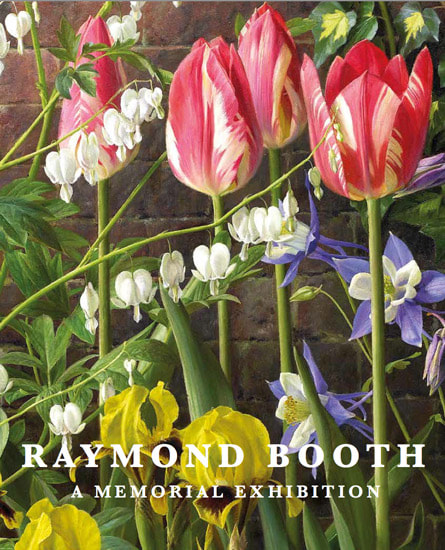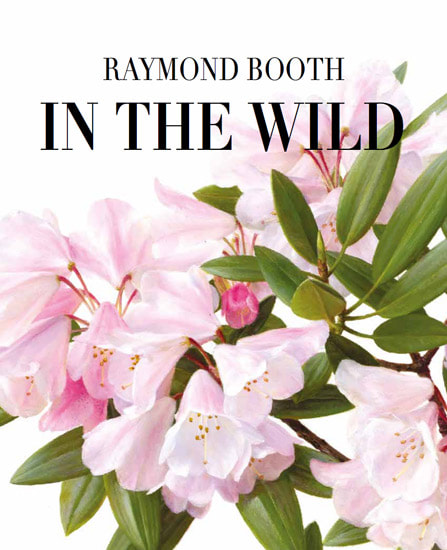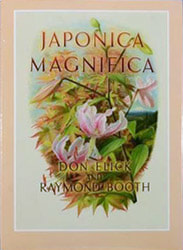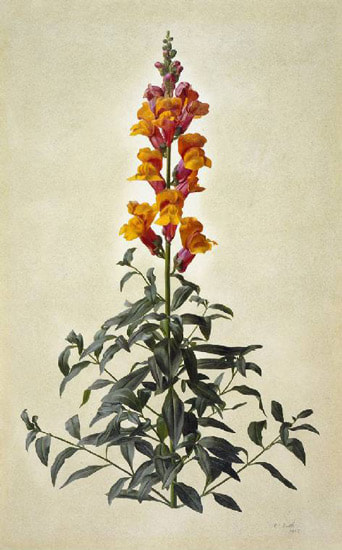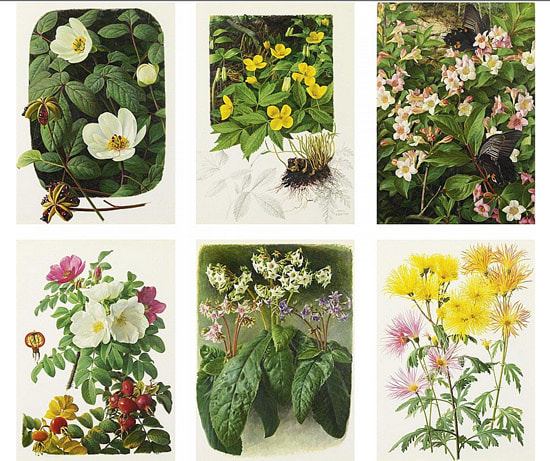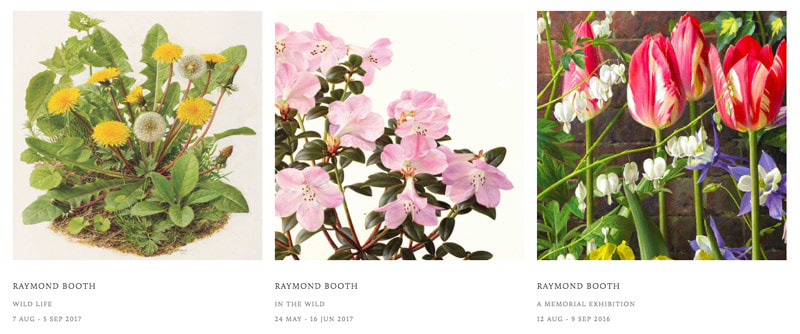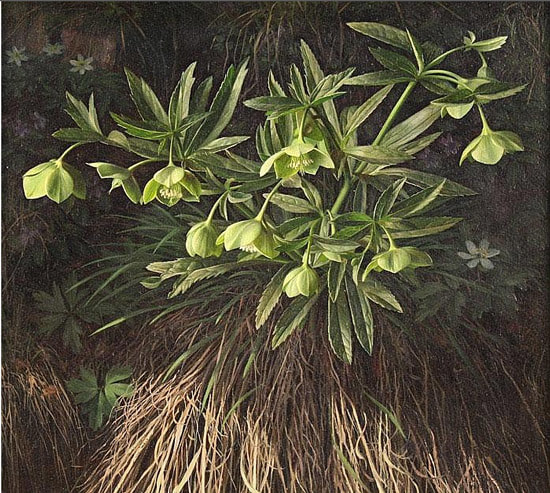- Home
- NEWS
-
HISTORY
- What is Botanical Art?
- What is Botanical Illustration?
- Botanical Art History Books >
- Herbals
- Florilegia and Flora
- Patrons of Botanical Art >
- Past Masters - Botanical Art and Illustration >
- Famous Asian Botanical Artists (600-1900)
- 20th & 21st Century Botanical Artists >
- Botanical Photographers
- Botanical and Herbal Art Online
-
ARTISTS
- Botanical Artists in the UK
- Botanical Artists in North America
- Botanical Artists in Europe
- Botanical Artists in Australia and New Zealand
- Botanical Artists in Asia
- Botanical Artists in Africa
- Botanical Artists in Latin America
- Botanical Printmakers, Photographers, Sculptors et al
- The Jill Smythies Award
- Botanical Artists on Facebook
- Botanical Art Blogs
-
Exhibitions
- Calls for Entries - OPEN exhibitions
- Online Exhibitions >
- RHS Botanical Art & Photography Shows >
- The Shirley Sherwood Gallery of Botanical Art >
- Hunt International Exhibition of Botanical Art & Illustration
-
UK
>
- North America >
- Europe >
- Australasia >
- Asia >
- Africa
- ARCHIVE: World Wide Exhibition of Botanical Art 2018
-
Education
- NEW BOOKS about Botanical Art and Illustration >
-
Best Botanical Art Instruction Books
>
- Tips and Techniques >
- Botanical Art Video Tips >
- Online Botanical Art Instruction >
- International Directory: Botanical Art Teachers
- International Directory of Botanical Art Courses >
- Artist Residencies, Scholarships and Bursaries
- Diplomas and Certificates >
- Distance Learning Courses
- Talks, Lectures & Tours
- Botanical Education on Facebook
- Materials
- Groups
-
Botany
- Why botany matters to artists
- Botany Books for artists >
- Scientific botanical illustration
- Plant Forms and Anatomy
- Plant Evolution and Taxonomy
- Plant Names and Botanical Latin
- Botanical Dictionaries
- How to Identify Plants
- Recording a Plant / Sketchbooks >
- Botanic Gardens & Herbaria >
- Blogs about Plants and Flowers
- Contact
Raymond Booth was a botanical, wildlife and natural history artist of international renown
who lived a reclusive life in Yorkshire and exhibited with the Fine Art Society.
who lived a reclusive life in Yorkshire and exhibited with the Fine Art Society.
Biography timeline - education and employment
|
He grew and painted many rare species of Japanese plants
1929 - Born and raised in the area of Roundhay. a suburb in north east Leeds. His father was a member of the local police force. It might reasonably be surmised that as a child he probably made good use of Roundhay Park which is the second largest urban park in Europe, comprising more than 700 acres (2.8 km2) of parkland, lakes and woodland used by numerous species of wildlife 1946 - he won a scholarship to Leeds College of Art at the age of seventeen. However his art studies were interrupted by a requirement to do his mandatory two years of National Service. He spent most of his two years with the RAF in Egypt - guarding the Suez Canal. After which he returned to college to complete his studies. 1953 - He graduated from Leeds College of Art Shortly after left college, it was found that he had contracted tuberculosis while with the RAF. He was sent to a sanatorium to recuperate and while there he had ample time to develop further his skills in painting. This was also the time when he developed his first botanical drawings. After he left the sanatorium he was minded to try and exhibit his work. He sent several of his drawings to a botanical art exhibition in London organised by the Royal Horticultural Society. He has won several awards from the RHS for his work. His work was noted by a number of distinguished plants people including Dr Harold Fletcher, a botanist and Director of the RHS Gardens at Wisley. The actor Ernest Thesiger (cousin of the explorer Wilfrid Thesiger) encouraged Jack Naimaster, then a director of Walker’s Galleries at 118 New Bond Street, to go and view them. He started to exhibit his art with Walker's Galleries until they closed. 1962 - He began exhibiting at at the Fine Art Society 1975 - first one man show at the Fine Art Society In later years he divided his time between botanical and wildlife painting and the cultivation of rare and exotic plants. 1982: Raymond Booth: Artist, Naturalist exhibition at the Fine Art Society 1991: Raymond Booth: Painter & Plantman exhibition at the Fine Art Society |
An intensely private man, Raymond Booth was immersed in his own world of poetry, plant cultivation, and the natural history of the few square miles around Adel Woods on the outskirts of his native Leeds. 1992 - he produced his magnum opus Japonica Magnifica, in conjunction with Don Elick. (see Publications below)
1996 - major exhibition of Japonica Magnifica at the Hunt Institute of Botanical Documentation in Pittsburgh featuring 85 original paintings for the book - see Japonica Magnifica: Paintings by Raymond Booth (1 April – 31 May 1996) 2002 - a major retrospective exhibition at Leeds City Art Gallery which he and his wife were persuaded to attend. 2007 - The Fine Art Society presented an exhibition devoted to the subject closest to Raymond’s heart: In Adel Woods, 2011 - an exhibition was held at the Fine Art Society to celebrate his 50 years as a gallery artist - during which time he only visited the gallery once! July 2015 - he died at his home in Alwoodley - his death was announced on 22 July. 2015 - A memorial exhibition (see below) was held at the Fine Art Society to celebrate both his life, his work and his extraordinary career. Obituaries He also has a short biography in Contemporary Botanical Artists (1996) by Shirley Sherwood |
Nothing delighted him more than the freedom to put a few basic requirements in a backpack and explore the countryside, sleeping under hedgerows or in woodland, and developing his intimacy with bird and animal life. – Peyton Skipwith
His approach to botanical illustration
The process of making his paintings and the continually deepening knowledge of his subject that this intensive, almost microscopic, focus produces are all that interest him.
|
A lot of his paintings were of British Mammals and bird life. However he rarely left his native Yorkshire.
However he also devoted himself to painting plants, particularly those which could be grown in gardens or a greenhouse and those suitable for background vegetation for his naturalistic animal studies. He was said to observe a plant through one or more growing cycles before taking up his brush. His painting room at home in Alwoodley – an 'inner sanctuary' was sacrosanct. Nobody was allowed to enter it - not even his parents or later on his wife, Jean. In terms of media, unusually for a botanical artist, he prefers to paint using oil on sized paper. His botanical paintings took four main forms
He was also fond of sometimes giving his plant portraits a coloured background in much the same way as used for portraits of people. He also produced a number of graphite drawings. |
Publications
Japonica Magnifica
|
Japonica Magnifica is his 'magnum opus'. This book portrays the flora of Japan, some in the context of the Japanese landscape where it grows.
The project to develop the book grew out of twelve years of correspondence with Don Elick, an American plant collector. He had lived in Japan for more than 40 years. Both men loved Japanese flora and landscape. Booth grew and then painted 85 paintings to illustrate the book , published in 1992. |
The book was published by Alan Sutton Publishing in 1992. The detailed botanical studies for this work were exhibited in London and Leeds as well as touring a number of museum venues in the United States.
|
Elick provided many of the specimens for the artist, who grew them in his garden in Yorkshire, England, in order to study them and draw them from life. Each plant portrait was true to scale. Booth's botanical paintings were remarkably accurate, including depictions of Japanese plant habitats that the artist himself had never seen.
Hunt Exhibition: Japonica Magnifica: Paintings by Raymond Booth 1 April - 31 May 1996
Japonica Magnifica by Don Elick and Raymond Booth
|
This very large book portrays the flora of Japan and is a collaboration between Don Elick, an American who lives in Japan, and Raymond Booth.
The book includes a map of Japan in the front and 64 colour plates of plants flowers - some of which are double page spreads. The deluxe edition of the book, which contained two specially commissioned plates signed by the artist, was available from The Fine Art Society. |
Hardcover: 144 pages inc. 32 full-page full-colour plates of paintings of flowers.
Size: Elephant folio Publisher First Edition: Japonica Magnifica was published simultaneously in 1992 by
Publisher: varies depending on date of publication BUY THIS BOOK (expensive) Japonica Magnifica
Japonica Magnifica
|
An Artist's Garden
Raymond Booth: An Artist’s Garden, with text by Peyton Skipwith, was published by Callaway Editions, New York in 2000.
An Artist's Garden by Peyton Skipwith and Raymond Booth
|
The fans of Raymond Booth's preference for meticulous precision and lush renderings in oil of the flowers and plants in his garden is fulfilled by this book.
This is the the first comprehensive collection of Booth's particular type of botanical painting - which is presented in an oversized format with complete fidelity to the original works of art. It includes exact-scale renderings of Jasminum nudiflorum and Fritillaria tubiformis |
Hard Cover
Publisher: Callaway, New York Publication Date: 2000 Dimensions: 29.5 x 2.5 x 41.5 cm Average Customer Rating out of 5 stars:
An Artist's Garden: [the Paintings of Raymond Booth]
Raymond Booth: An Artist's Garden from Amazon.com
|
Skipwith notes in the introduction that, atypically for botanical illustration, Booth's work is "unabashedly pictoral"; it most often places its subjects (flowers, trees, birds, squirrels, owls, etc.) within recognisably forest-like settings, which may bear some resemblance to the artist's garden in Leeds. Publisher's Weekly - about an Artist's Garden
|
Books by other authors
A painting of an Antirrhinum (orange yellow) was included in Flower Drawings by David Scrase 1997 Cambridge University Press He contributed three paintings as illustrations for The Camellia by Beryl Leslie Urquhart, published in 1956 Exhibition Catalogues
|
Exhibitions and Collections
Exhibitions
He first exhibited individual works at Walker Galleries in New Bond Street. In 1962, he exhibited for the the first time with The Fine Art Society. Raymond Booth was then represented exclusively by The Fine Art Society until his death in 2015.
Exhibitions of his paintings are still held on a regular basis. They are almost always a mix of his natural history and botanical paintings.
In her first book, Shirley Sherwood tells a story of how she was introduced to his work by queuing on a chilly pavement outside the Fine Art Society at 7.30am in the morning - and was still sixteenth in line to buy one of his paintings! Alan and Jane Clark were also fans and queued for his work. Patricia Cornwell, the noted thriller writer and collector was also a fan and bought a number of his works at the retrospective at Leeds Art Gallery.
Exhibitions of his paintings are still held on a regular basis. They are almost always a mix of his natural history and botanical paintings.
In her first book, Shirley Sherwood tells a story of how she was introduced to his work by queuing on a chilly pavement outside the Fine Art Society at 7.30am in the morning - and was still sixteenth in line to buy one of his paintings! Alan and Jane Clark were also fans and queued for his work. Patricia Cornwell, the noted thriller writer and collector was also a fan and bought a number of his works at the retrospective at Leeds Art Gallery.
For ALL ENQUIRIES about his available artwork
please contact either:
the Fine Art Society in London or the Fine Art Society in Edinburgh
please contact either:
the Fine Art Society in London or the Fine Art Society in Edinburgh
|
Fine Art Society
He started exhibiting with FAS in 1962 and was represented by them for over 50 years and is still a "gallery artist". He held his first one-man exhibition at the Fine Art Society in 1975. In total he had eight one-man shows at The Fine Art Society in 1975, 1982, 1991, 1993, 2000, 2007, 2011 - and then three shows posthumously in 2015, 2017
1984 - a retrospective exhibition of his work was presented at several galleries in his native Yorkshire. Leeds City Art Gallery
Abbot & Holder
Watts Contemporary Gallery
The Garden Museum
|
The Flora Japonica ExhibitionsLotherington Hall
Royal Botanic Garden Edinburgh - Inverleith House
The exhibition, sponsored by PaineWebber in cooperation with The Fine Art Society of London, opened at
|
Permanent Collections
|
Raymond Booth’s artwork is included in many public and private collections in Europe, America, Japan
and the Middle East. His work is held in the following collections:
|
Reference:
|
This is an interview with Peyton Skipworth - who is sitting in the exhibition "Raymond Booth 1929 - 2015: Detailing Nature" at the Watts Gallery in Surrey.
A Timeline of Paintings
|
I'm going to develop a timeline of paintings - over time. These will include links or annotations to where they can be seen online or in a catalogue or a book if that is possible
Legend:
|
A fusion of technical skill and a keen eye, with a deep passion for nature and solitude, Booth’s genius rested in the intimate relationship that existed between himself and his subjects. |
- 1950s
- Azalia Indica. Oil on paper laid on board. Signed and dated, 1954. 15cmsx18.5cms. Framed: 24x27.5cms. (Abbott & Holder)
- Lords and Ladies. Oil on card. Signed and indistinctly dated, 'May 198...'. 16x21cms. Framed: 23x27cms. (Abbott & Holder)
- Narcissi & Willow Warbler. Oil on card. Signed and dated, 1987. 33.5x31.5cms. Framed: 49x 37cms. (Abbott & Holder)
- October Flowers, 1987 Oil on board, signed and dated, lower right 29 x 15 inches | 73.5 x 38 cm
- Rhododendron Cilipnieuse, 1989 Oil on board, signed and dated R C Booth 1989, lower right 12 3/4 x 19 1/8 inches (32.5 x 48.5 cm)
- Rosa Canina, Anatomy of a Wild Rose (United Kingdom, 1981 - 1982) - Oil and pencil on paper, signed and dated
- Tulipa ‘Zoomerschoon’ and Other Spring Flowers, 1989 Oil on board, signed and dated, lower right 26 x 11 1/2 inches | 66 x 29 cm
- 1990s
- Fritillaria Persica, 1998 Oil on board, signed and dated, lower right 40 x 20 inches | 101.5 x 40.5 cm
- Iris and Corn Studies. Pencil and oil on paper. Signed and dated, 1994. 21x26.5cms. Framed: 25x30.5cms. (Abbott & Holder)
- Iris Acutiloba, 1991 Oil on paper, signed and dated, lower right 10 3/4 x 8 3/4 inches | 27.4 x 22.3 cm
- Katja Apple and Bullfinch, 1999 Oil on board, signed and dated R C Booth '99, lower right 11 3/8 x 16 1/8 inches (29 x 41 cm)
- Primula. Oil on paper. Signed and dated, 1994. 25x19cms. Framed: 33x27.5cms. (Abbott & Holder)
- Rhododendron Maculiferum Anwheiense, 1998 Oil on paper, signed and dated, R C Booth 1998, lower right 17 x17 inches (43 x 43 cm)
- Rhododendron Microgynum, 1997 Oil on paper, signed and dated, lower right 17 1/4 x 29 1/4 inches | 43.8 x 66.4 cm
- Rhododendron Morii, 2002 Oil on paper, signed and dated, lower right 16 x 17 1/2 inches | 40.6 x 44.5 cm
- Rhododendrons, 1999 Oil on paper, signed and dated, lower right 13 1/2 x 23 1/4 inches | 34.5 x 59 cm
- St John's Wort. Oil on paper. Signed and dated, 1994. 26x19.5cms. Framed: 47x39.5cms. (Abbott & Holder)
- Study Rosa Aricularis. Oil on paper. Signed and dated, 1994. 26x19.5cms. Framed: 47x 39.5cms.(Abbott & Holder)
- Gorse & Yellowhammer. Oil on card. Signed and dated, 2000. 21x25cms. Framed: 37x40cms.
- Iris Lutescens, 2001 Oil on paper, signed and dated, lower right 10 1/4 x 15 inches | 26 x 38 cm
Oil on card
- Daisies and Warbler. Indistinctly signed. 21x16.5cms. Framed: 25x21cms. (Abbott & Holder)
- Orange Lily. Oil on card. 58x32cms. Framed: 69x43cms. (Abbott & Holder)
- Autumn Leaves. Oil on paper. Signed and dated, 1994. 26x19.5cms. Framed: 47x39cms. (Abbott & Holder)
- Bilberry in Flower with Male Emperor Moth. Oil on paper. Signed. 19.6x14.5cms. Framed: 35.5x39cms. (Abbott & Holder)
- Fritillaria Kotschyana Oil on paper, 11 x 8 inches ( 28 x 20.3 cm)
- Holly at Sunset. Oil on paper. Signed. 21.5x19.5cms. Framed: 36.5x33.5cms. (Abbott & Holder)
- Iris Hyrcana. Oil on paper. Signed. 14x10cms. (Abbott & Holder) Framed: 27.5x22.5cms. (Abbott & Holder)
- Paphiopedilium. Oil on paper. Signed. 20.5x26.5cms. Framed: 31.5x38cms. (Abbott & Holder)
- Pernettya hybrids. Oil on paper. 15x14cms. Framed: 27.5x26.5cms. (Abbott & Holder)
- Plant Studies. Oil on paper. Signed. 22x33.5cms. Framed: 37x46cms
- Pods and Seeds of Magnolia Sieboldi Oil on paper 20 x 15 1/2 inches (51 x 39.4 cm) FAS In the Wild
- Red Admiral & Hawthorns. Oil on card. Signed. 14.5x13cms. Framed: 29.5x28cms (Abbott & Holder)
- Red Dead Nettle Study. Oil on paper. Signed. 17x14cms. Framed: 31x25cms. (Abbott & Holder)
- Rhododendron Moupinense, Pink-Flowered Oil on paper 16 1/4 x 18 inches (41 x 45.5 cm)
- Robin and Camelia. Oil on card. Signed. 23.5x21cms. Framed: 35.5x32.5cms (Abbott & Holder)
- Studies of Irises. Oil on paper. Signed. 22x33.5cms. Framed: 36.5x46cms (Abbott & Holder)
- Swallow and Crab Apple Blossom Oil on board, sigend R C Booth, lower right 10 1/4 x 12 1/4 inches (26 x 31 cm)
- Silver Birch in Adel Woods. Signed and dated, '15 December 1980'. 52x33.5cms. Framed: 86.5x63cms. (Abbott & Holder)
Resources about Botanical Art and For Botanical Artists
ABOUT: About the Author | Contact | Testimonials | Privacy Policy COPYRIGHT 2015-22: Katherine Tyrrell all rights reserved.
|
NEWS
News Blog about artists, awards, exhibitions etc. |
EXHIBITIONS
- Calls for Entries - Exhibitions around the world - Online Exhibitions - RHS Exhibitions - Hunt Exhibitions ORGANISATIONS
- Botanical Art Societies - national / regional / local - Florilegium & Groups - Botanical Art Groups on Facebook |
EDUCATION
- Tips and Techniques - Best Botanical Art Instruction Books - Directory of Teachers - Directory of Courses - Online Botanical Art Courses - Diplomas and Certificates - Talks, Lectures and Tours ART MATERIALS (Paper / Vellum) BOTANY FOR ARTISTS - Scientific Botanical Illustration - Best Botany Books for Artists - Plant Names & Botanical Latin BOTANIC GARDENS & Herbaria |
FEEDBACK
Please send me . - news to share - info. about exhibitions - any suggestions for what you'd like to see on this website ADVERTISE Contact me if you'd like to promote workshops and courses on this site. AFFILIATION This website is free to you but not for me! (See Affiliate Income below) |
|
Cookies, Personal Data & Privacy tells you how this site relates to and impacts on you and your privacy - and your choices.
Product & company names may be trademarks of their respective owners |
About Affiliate Income: This website has been created to share information not to make a profit. I am an Amazon Associate and earn from qualifying purchases (e.g. books from Amazon) which helps offset costs associated with maintaining this very large website.
|
- Home
- NEWS
-
HISTORY
- What is Botanical Art?
- What is Botanical Illustration?
- Botanical Art History Books >
- Herbals
- Florilegia and Flora
- Patrons of Botanical Art >
- Past Masters - Botanical Art and Illustration >
- Famous Asian Botanical Artists (600-1900)
- 20th & 21st Century Botanical Artists >
- Botanical Photographers
- Botanical and Herbal Art Online
-
ARTISTS
- Botanical Artists in the UK
- Botanical Artists in North America
- Botanical Artists in Europe
- Botanical Artists in Australia and New Zealand
- Botanical Artists in Asia
- Botanical Artists in Africa
- Botanical Artists in Latin America
- Botanical Printmakers, Photographers, Sculptors et al
- The Jill Smythies Award
- Botanical Artists on Facebook
- Botanical Art Blogs
-
Exhibitions
- Calls for Entries - OPEN exhibitions
- Online Exhibitions >
- RHS Botanical Art & Photography Shows >
- The Shirley Sherwood Gallery of Botanical Art >
- Hunt International Exhibition of Botanical Art & Illustration
-
UK
>
- North America >
- Europe >
- Australasia >
- Asia >
- Africa
- ARCHIVE: World Wide Exhibition of Botanical Art 2018
-
Education
- NEW BOOKS about Botanical Art and Illustration >
-
Best Botanical Art Instruction Books
>
- Tips and Techniques >
- Botanical Art Video Tips >
- Online Botanical Art Instruction >
- International Directory: Botanical Art Teachers
- International Directory of Botanical Art Courses >
- Artist Residencies, Scholarships and Bursaries
- Diplomas and Certificates >
- Distance Learning Courses
- Talks, Lectures & Tours
- Botanical Education on Facebook
- Materials
- Groups
-
Botany
- Why botany matters to artists
- Botany Books for artists >
- Scientific botanical illustration
- Plant Forms and Anatomy
- Plant Evolution and Taxonomy
- Plant Names and Botanical Latin
- Botanical Dictionaries
- How to Identify Plants
- Recording a Plant / Sketchbooks >
- Botanic Gardens & Herbaria >
- Blogs about Plants and Flowers
- Contact
